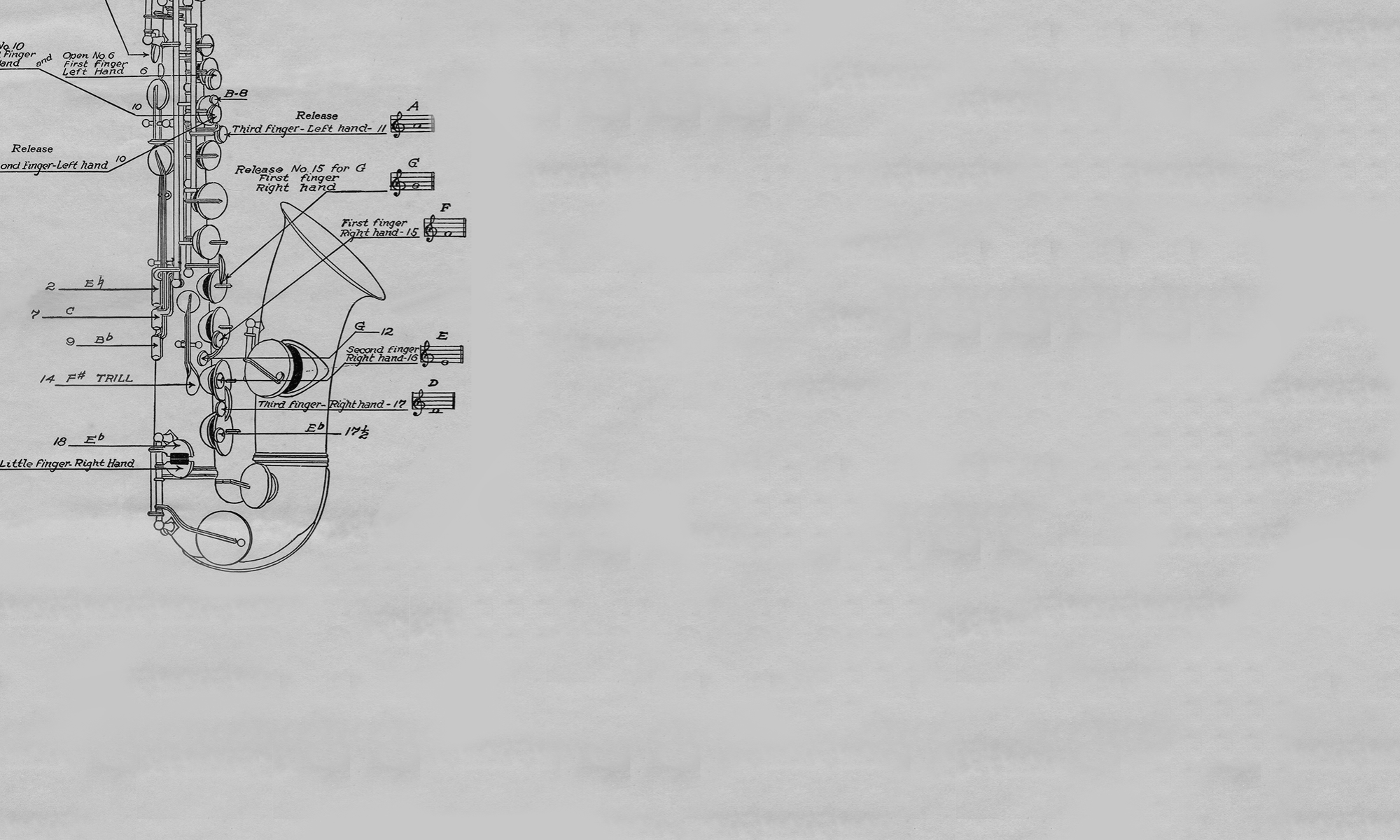from the Carl Landrum Historical Bands Collection

This drawing of Adolphe Sax by an unknown artist was printed around the time of the Paris Universal Exposition of 1867. The Belgian instrument builder Aldophe Sax (1814-1894) invented the saxophone in 1845. Sax was born into a family of instrument builders. In 1828, he studied flute and took private lessons on clarinet with Valentin Bender at the Royal School of Music in Brussels, a precursor to the Royal Brussels Conservatoire. Given his talent on the instrument, Sax could have pursued a career in clarinet performance, but instead joined the family workshop as an instrument builder. At 15, he showed his first designed instrument, a clarinet crafted of ivory, at the Brussels Industrial Exhibition of 1830. Sax’s first efforts as an instrument builder focused on improving the tone quality and design of the bass clarinet. In 1842, he opened a workshop in Paris. Soon after, he sketched his first designs of the saxophone and in 1845 patented his new instrument. Sax’s decision to create the saxophone was rooted in his desire to develop an instrument that would better blend the tonal qualities of woodwind and brass instruments commonly used at that time for Europe’s military bands. Essentially the saxophone was designed to bridge the sounds of these distinct instrument families.
In the early 1840s, several larger instrument manufacturers sought to dissolve his patents on the saxhorn, saxtromba, and saxophone, so they too could manufacture those types of instruments. Final judgement was deferred on this case until after Louis Napoleon III seized political control of France in December of 1851, establishing France’s Second Empire (1852-1870) and stabilizing the country’s banking system and manufacturing economy. In 1854, the French courts finally ruled in Sax’s favor, but that did not stop rival companies like Paris’ Guichard Music Company from continuing to manufacture counterfeit saxophones under their own name. Although Sax won several additional legal cases regarding these counterfeit instruments, his patent expired in 1865, which opened the door for other companies to begin building their own versions of his saxophone. The first American-made saxophones were not built until 1892, two years before Sax’s death, and it took another twenty-five years for these instruments to gain a reputation in the United States.
